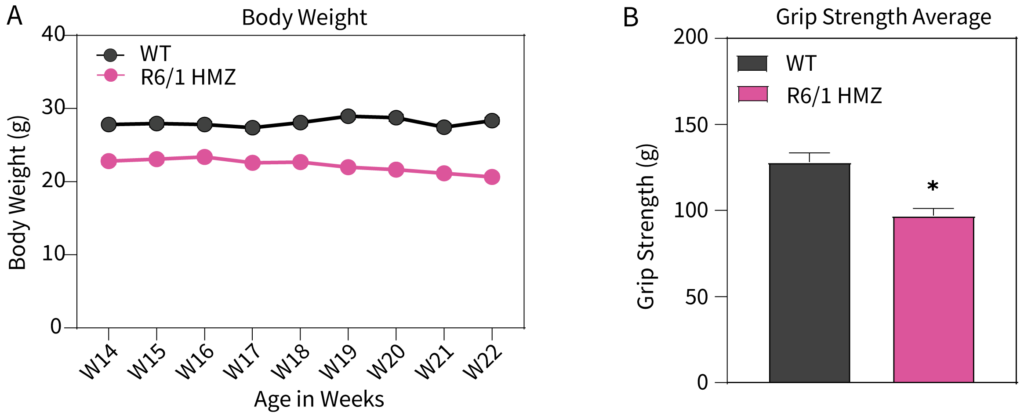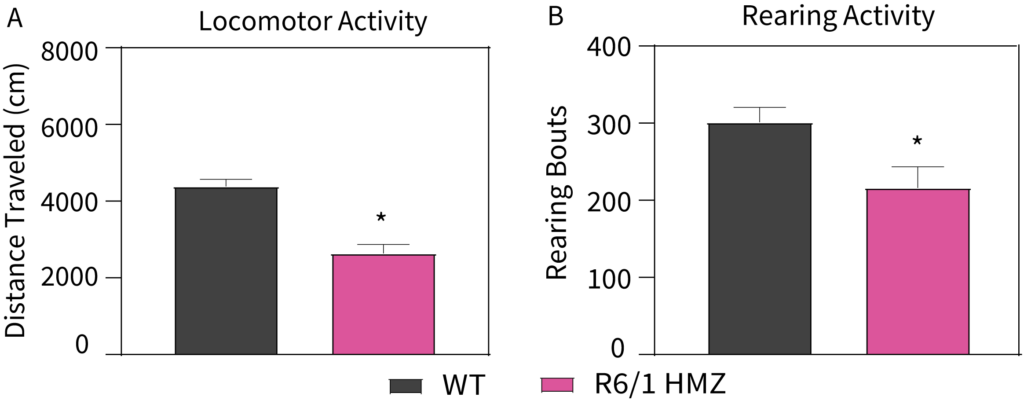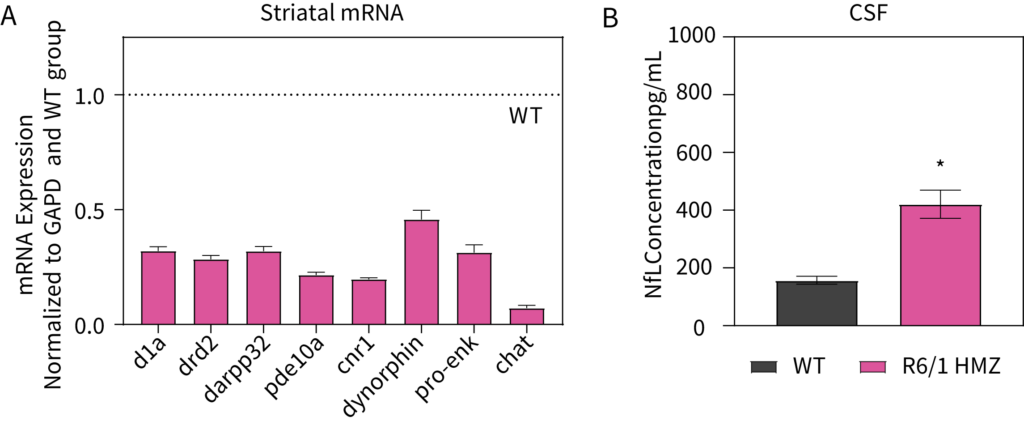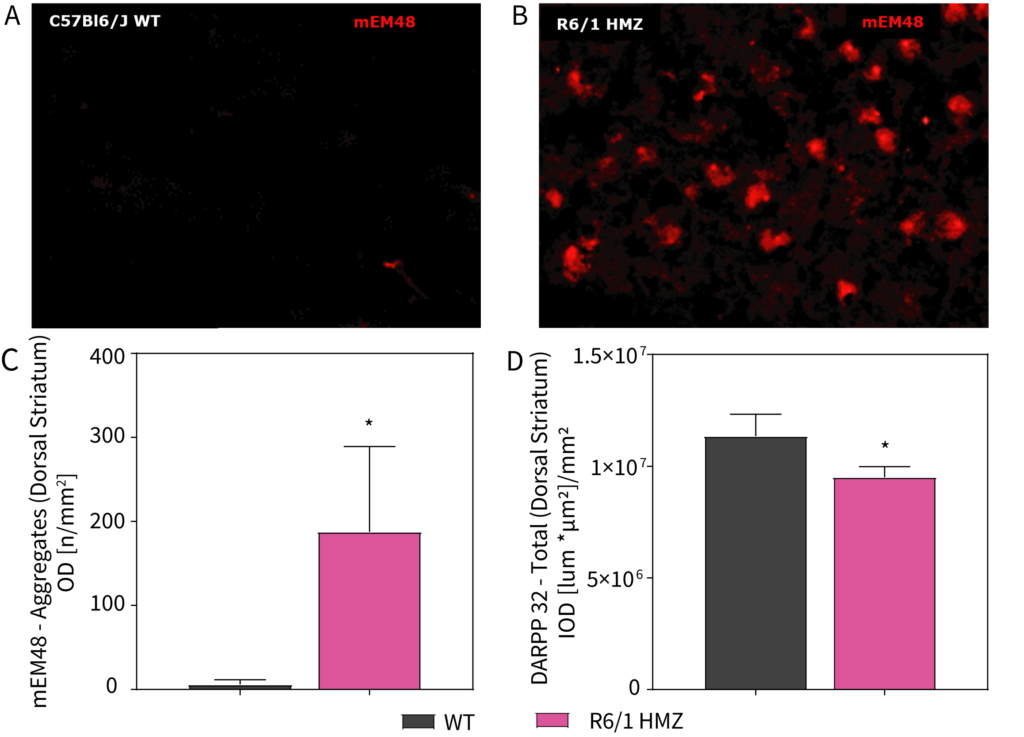The B6.Cg-Tg(HD exon1)61Gpb/J mouse line, or R6/1, is a Huntington’s disease model that carries the human huntingtin gene’s 5’ end (116-120 CAG repeats). Similar to the R6/2 mice, these mice motor deficits, seizures, reduced body weight, and muscle mass, however, unlike the R6/2 model, their survival is comparable to that of wildtype (WT) mice. We conducted a comprehensive characterization of these mice starting at 15 weeks of age as shown below.
R6/1 Mice Exhibit Reduced Body Weight and Grip Strength

(A) R6/1 HMZ mice weigh significantly less than C57BL6/J WT mice (WT). (B) Forelimb grip strength was assessed at 18 weeks of age. R6/1 HMZ mice exhibit significantly decreased forelimb grip strength as compared to WT mice.
Reduced Locomotor Activity and Rearing in R6/1 Mice

Locomotor activity was assessed in the open field chambers at 16 weeks of age. R6/1 HMZ mice exhibit significantly decreased locomotor activity (A) and rearing (B) as compared to WT mice.
Biomarker Analyses in R6/1 Mice

(A) Striatal mRNA levels of Medium Spiny Neurons (MSN) markers are significantly reduced in 22-week-old R6/1 HMZ mice. All measures are normalized to GAPDH and WT levels. (B) R6/1 HMZ mice exhibit significantly increased levels of NF-L in CSF, a marker of neuronal loss, as compared to WT mice.
Huntingtin Aggregates in Dorsal Striatum
Neurons with mutant huntingtin protein contain huntingtin aggregates of the N-terminal fragment, which can be quantified using the mEM48 antibody.

mEM48 labeling in the striatum of (A) WT and (B) R6/1 mice shows significant accumulations of aggregated HTT in R6/1 HMZ mice compared to WT mice (C). MSNs were labeled using DARPP-32 antibody showing significantly fewer striatal MSNs in the R6/1 HMZ mice compared to WT mice (D).